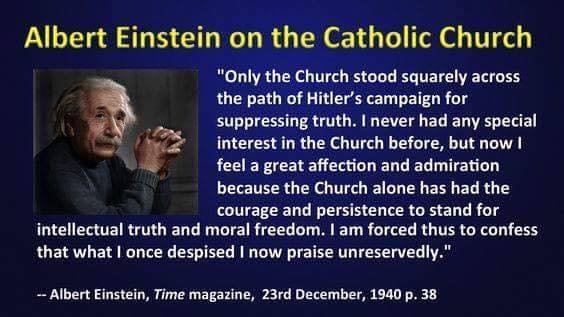continued from post #1843
9. 170 years before the Council of Nicaea Saint Justin Martyr wrote in
First Apology (a letter to pagan emperor Antoninus Pius (138-161 A.D.) explaining what Christians did at Mass):
“On the day we call the day of the sun, all who dwell in the city or country gather in the same place. The memoirs of the apostles and the writings of the prophets are read, as much as time permits.
“When the reader has finished, he who presides over those gathered admonishes and challenges them to imitate these beautiful things. Then we all rise together and offer prayers for ourselves . . . and for all others, wherever they may be, so that we may be found righteous by our life and actions, and faithful to the commandments, so as to obtain eternal salvation. When the prayers are concluded we exchange the kiss.
“Then someone bring bread and a cup of water and wine mixed together to him who presides over the brethren. He takes them and offers praise and glory to the Father of the universe, through the name of the Son and of the Holy Spirit and for a considerable time he gives thanks (in Greek: eucharstian) that we have been judges worthy of these gifts. When he has concluded the prayers and thanksgiving, all present give voice to an acclamation by saying: 'Amen.’
“When he who presides has given thanks and the people have responded, those whom we call deacons give those present the “eucharsited” bread, wine and after and take them to those who are absent.”
10. 136 years before the Council of Nicaea Saint Irenaeus, Bishop of Lyons, and a disciple of Saint Polycarp who was a disciple of the Apostle John, proclaimed that all churches must be in unity with the Church of Rome, which was established by Peter and Paul:
“But since it would be long to enumerate in such a volume as this the succession of all the churches, we confound all those who, in whatever manner, whether, through self-satisfaction or vainglory, or through blindness and wicked opinion, assembled other than where it is proper, by pointing out here the successions of the bishops of the greatest and most ancient church known to all, founded and organized at Rome by the two most glorious apostles, Peter and Paul, that church which has the tradition and the faith which comes down to us after having been announced to men by the apostles. With that church because of its superior origin, all the churches must agree, that is, all the faithful in the whole world, and it is in her that the faithful everywhere have maintained the apostolic tradition.”
11. It is true. If Emperor Constantine started the Catholic Church, then there should be no way to trace the continuity of every Bishop of Rome, from Peter to Francis today. To the contrary, there is only one Church on the face of this earth that can verifiably point to the Church in Rome, established by Peter and Paul, and by continuity in leadership, doctrine, and tradition show a seamless continuity from the first century until today, and that Church is the One, Holy, Catholic, and Apostolic Church.
12. Prior to the Council of Nicaea there had been many local councils where local bishops, priests, and deacons gathered to issue canons to the faithful; such as the Councils of Carthage, where Saint Cyprian presided at the Seventh Council in 256 A.D. where a canon was issued stating,
“. . . heretics, who are called antichrists and adversaries of Christ, when they come to the Church, must be baptized with the one Baptism of the Church, so that friends may be made of adversaries, and Christians of antichrists.” Another example of the Council of Elvira, Spain in 300 A.D. where 19 bishops and 26 priests and deacons gathered together to issue 81 canons. Canon 16 stated,
“Heretics, if they do not which to come over to the Catholic Church, are not to be given Catholic girls in marriage.” Therefore, how could Constantine have started the Catholic Church in 325 A.D. if it already existed in Spain in 300 A.D.?
13. The Romans were aficionados when it came to documenting the legal affairs and history of the Empire. If it had been the case that Constantine established his own state religion or established a new state Church, we would have been able to find it documented somewhere in history that such an event happened,
but when we examine the history and legal documents from ancient Rome, we find no traces that the myth that Constantine founded the Catholic Church is true.
Moreover, if Constantine did found the Catholic Church at the First Council of Nicaea then we should be able to find at least some reference to the Roman Emperor in the creed and canons of the Council, but in the
Creed of Nicaea and in its Twenty Canons nothing was mentioned about the Roman Emperor. Nothing at all.
To the contrary, what all the canons are dealing with is membership of those who had rejected the faith during the persecution, fallen lapse, or who had been excommunicated, primacy of Churches, and the administration of the Sacraments. Altogether the canons are concerned with establishing a solidarity and uniformity of administration and liturgy in the Catholic Church. There is no concern whatsoever in these canons for the Roman Empire or the Roman Emperor in the Canons of the Council of Nicaea.
In regards to the Nicene Creed, it was dealing with more fully proclaiming the
Apostle’s Creed, which the Church already affirmed in manner that resolved the Arian heresy. We find nothing in the Creed of this Council that supports the Myth of Constantine Founding the Catholic Church.
Indeed, the only place we see name of Constantine mentioned in reference to the Council of Nicaea is in a post-Council Synod Letter written to the Church of Alexandria, but only in regards paying him deference and honor due to him as the Emperor of Rome who called the bishops together to resolve the Arian heresy:
“To the Church of Alexandria, by the grace of God, holy and great; and to our well-beloved brethren, the orthodox clergy and laity throughout Egypt, and Pentapolis, and Lybia, and every nation under heaven, the holy and great synod, the bishops assembled at Nicaea, wish health in the Lord...
continue reading here)
Conclusion of the Emperor Constantine Founder Myth
Those who posit that Constantine founded the Catholic Church either with the
Edict of Milan or by calling together the First Council of Nicaea
are unable prove their claim. There is no documentation from that time, either explicit or implicit by historian or theologian that even hints that such an event transpired or was the intention of Constantine or the bishops of the Catholic Church to transpire.
This story, most famously told by Jehovah Witnesses and Fundamentalist Protestants, came out of their necessity to support their lie that there was an apostasy in the early Church. It is their way to explain how their reform and late arrival is justifiable. The myth is that because the Church of the Apostles fell in to apostasy, a remnant of the true and orthodox believers of Jesus remained hidden from and often persecuted by the Catholic Church until THEY brought the reform and true faith back.
Prior the rise of Protestantism, no one ever dared to tell this lie. Only in the space of the unintelligent, uncurious, and hostile can such a myth and lie bear fruit.
Again, none of which can be proved or supported by the documented facts that the Churches we read about in the Bible started calling themselves Catholics by the early Second Century, and the unique teachings of that Church founded by the Apostles are only present in the Catholic Church today that is in union with See of Rome where the successor of Peter presides.
*Used with permission.




